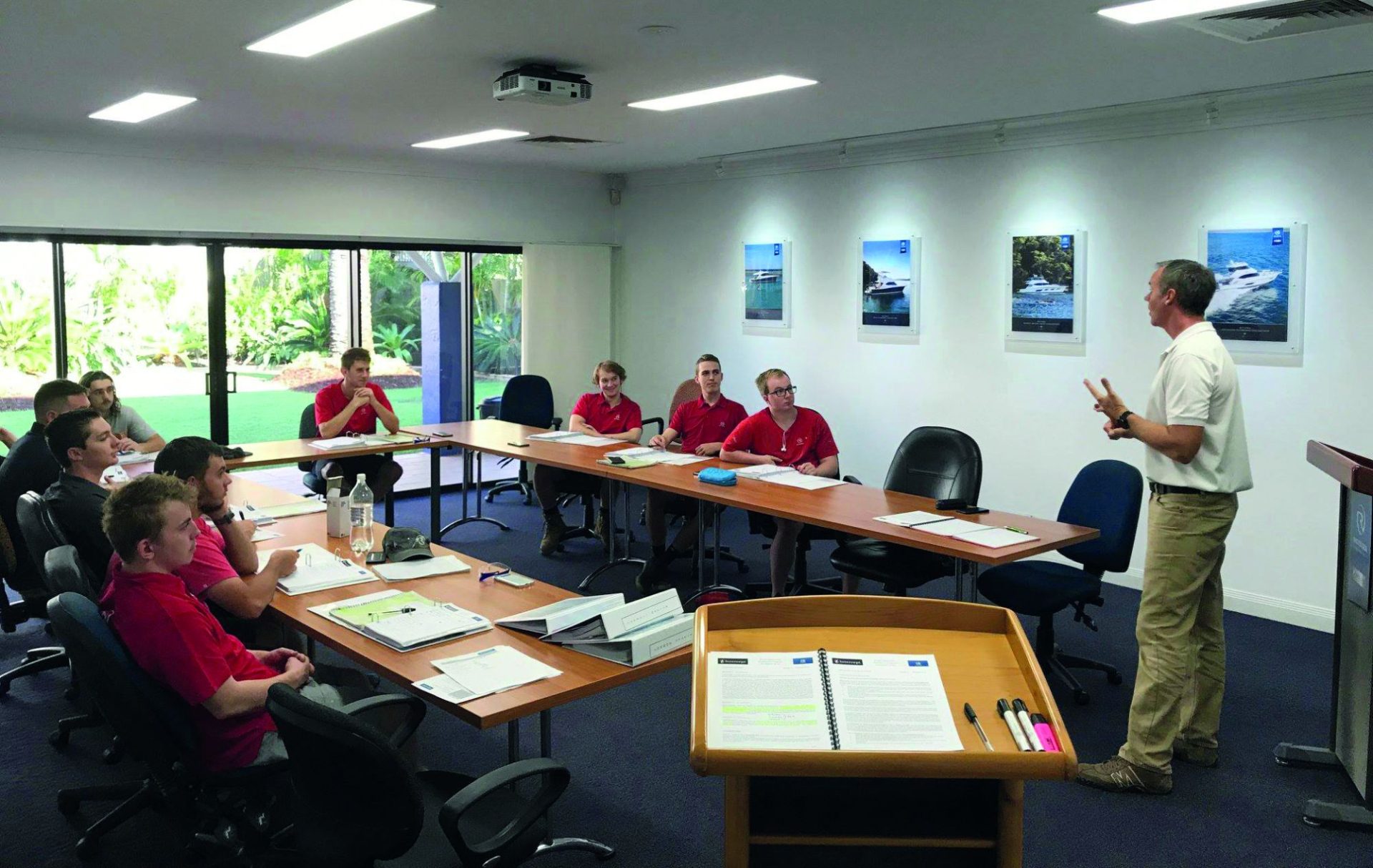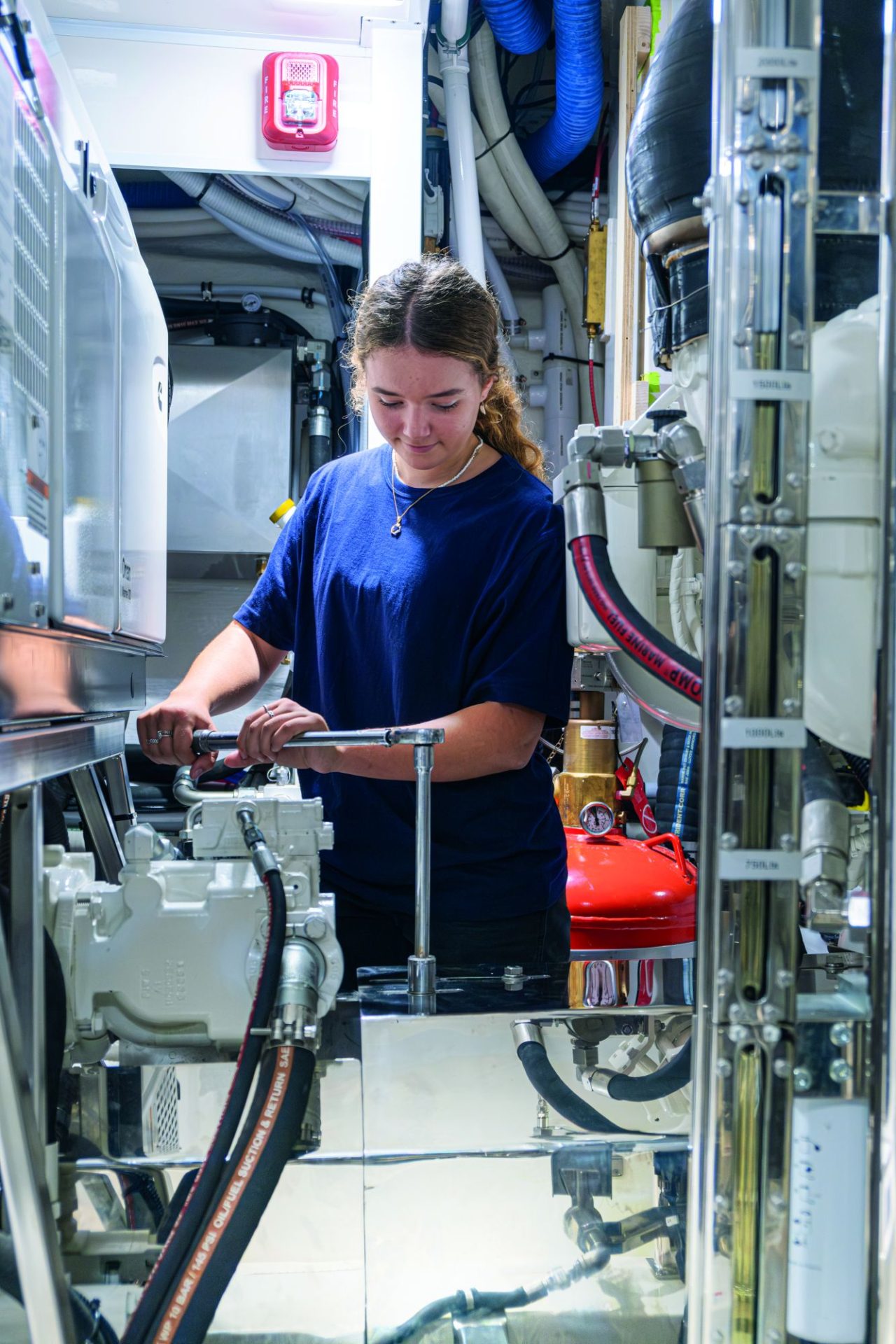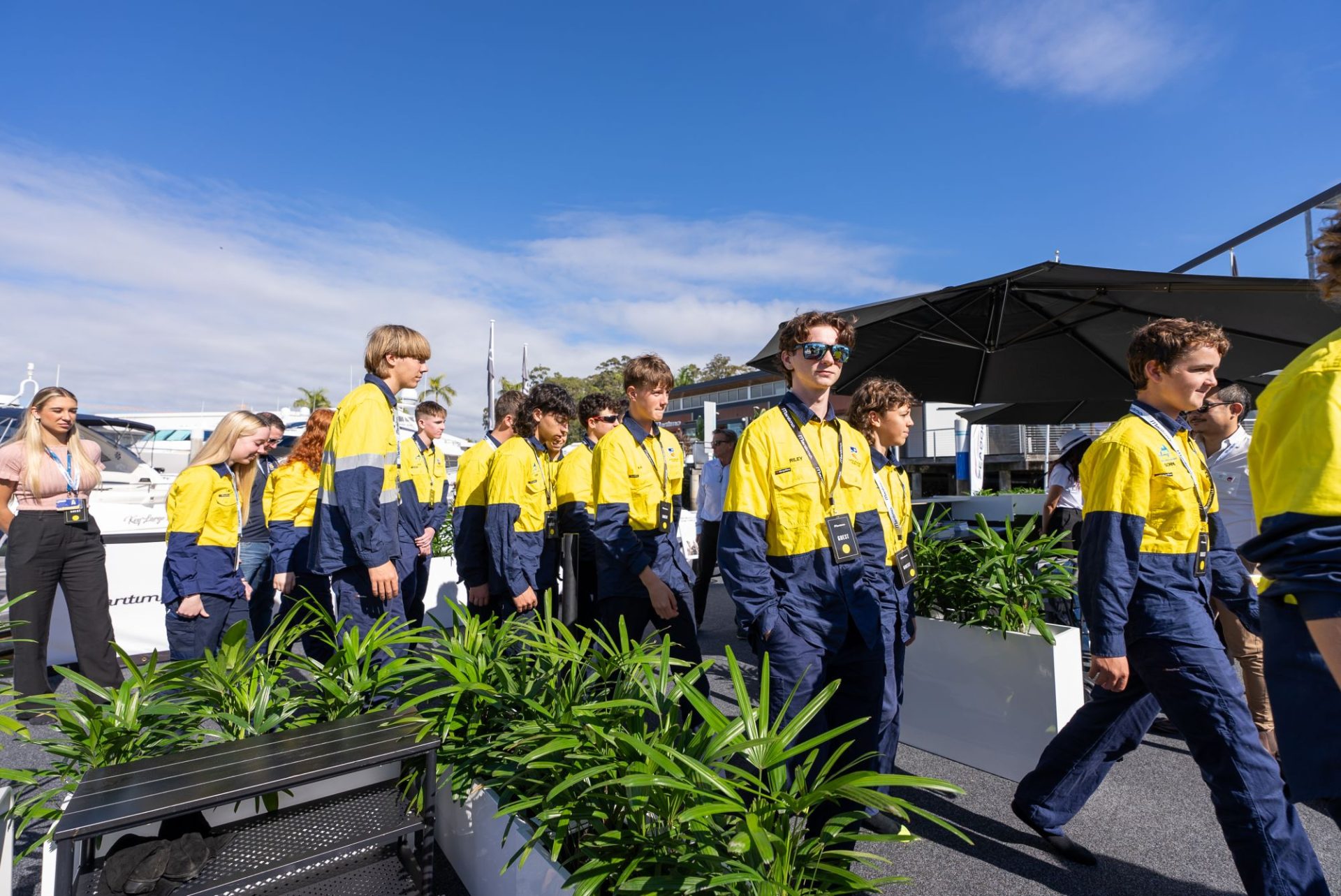Young talent time
A concerted effort to bring to life the benefits of working in the marine industry aims to capture the imagination and application of new talent, reports Jeni Bone.
09 November 2023
The Australian marine industry has always been a powerhouse and pillar of the economy. Naturally, being girt by sea and with 85 percent of the population living within 50 kilometres of the coast, Australia derives much of its identity from the sea and the waterways that punctuate our wide-brown land.
According to figures from the Boating Industry Association (BIA), the industry, which comprises “designers, manufacturers, importers, brokers, insurers, retailers, charters, yacht and boat clubs, marinas, events, surveyors and trades from boatbuilders to riggers and more”, was in great shape in 2019, reporting a national turnover of around AU$9 billion.
There was, however, concern about a growing skills shortage across all parts of the sector and a lack of investment measures in place to attract newcomers, apprentices and skilled trades into the industry.
Then the pandemic arrived in 2020. After the initial disruption and stress caused by general uncertainty and health precautions, by mid-year there was a dramatic surge in demand for boats, equipment and accessories.
As a result, boat licences across the country rose by around 7 percent, and there was a 16 percent increase in women getting their boat licences.
As BIA spokesperson Neil Patchett explains, “Governments recognised that boating was an activity that could be done in a COVID-safe way. Flexible working conditions also drew new people to boating, often for the first time. “Registrations for new boats increased significantly across the nation.
“The subsequent demand for boats, equipment and accessories exceeded supply, which was hampered by stock shortages and supply chains, as well as labour shortages, especially in skilled workers.”
In early 2023, an AU$11.8-million, purpose-built TAFE Queensland Marine Centre of Excellence opened in Coomera, a five-minute drive from the manufacturing, service and sales hub of the Marine Precinct.
“At every level of the industry there’s a need for skilled and capable workers,” says Patchett, referring to the BIA Member Survey in April 2023, which showed that 96 percent of respondents were concerned about skills shortages.
“The BIA has raised these concerns with Jobs and Skills Australia, the Department of Employment and Workplace Relations, and state ministers and departments,” he says.
On the Gold Coast, the BIA has partnered with the private sector to establish a Boating Industry Academy with the sole purpose of providing a pipeline of well-prepared young people interested in school-based apprenticeships.
Students in Years 10 or 11 spend five weeks a term in school at the Australian Industry Trade College’s Robina campus on the Gold Coast, and up to 28 weeks a year in the boating industry at the Coomera marine precinct. The program provides students with a solid base of key skills and industry knowledge before commencing a schoolbased apprenticeship/traineeship in term 3 of Year 11.
“The initial intake number of young people to the trade school was 19 at the start of the year, and we added significantly to that number mid-year.
“This is a direct response to the extraordinary needs of industry for apprentices, which includes those who work in marine craft construction,” explains Patchett.
“On another front, in multiple states, we’re pushing for greater flexibility in the delivery of online TAFE learning modules so people in regional areas can learn remotely rather than travelling hours to a location and organising accommodation.”
Live and activated
Yet another industry initiative is Marine Jobs, a collaboration among the Marina Industries Association, the BIA and Superyacht Australia to support training, skills, jobs and careers in the marine industry, managed by Maria Hobbs, appointed as Marine Jobs Business Development Officer.
In May, Marine Jobs hosted a Marine Industry Open Day in Cairns, which involved 37 exhibitors and attracted 1,200 people in four hours.
“Our location partners Austal, Norship and Tropical Reef Shipyard welcomed 500 young people through their facilities,” says Adam Chanter, who was previously employed by the Queensland Government for marine skills strategy and is now working on Marine Jobs for Superyacht Australia.
More than 300 young people attended the Marine Jobs Careers Day at the 2023 Sydney International Boat Show. Next on the agenda is another Careers Festival in Cairns and promoting Marine Jobs at the Club Marine Perth Boat Show in September, followed by an exciting activation on the Gold Coast where the Southport Yacht Club will welcome the 56-metre HMAS Maryborough.
“It will be a great opportunity for people to get on board, and a pre-activation for the Gold Coast Marine Industry Open Day in October, which will involve the entire Marine Precinct,” says Chanter.
“We want people to rethink how they see the industry, so it’s live and activated across multiple locations. People can get inside, get on board and experience the fun. If we promote superyacht, commercial shipping and defence right, we can be confident of a 15 to 20 percent increase on current recruitment.”
Around Australia, there are differences in requirements. In the west, for example, apprentices are in strong supply, while there’s a dearth of skilled tradespeople and senior workers. “There’s some difference,” acknowledges Patchett.
“There’s a skills shortage in many areas, and that includes mentoring and leadership roles. Our main focus is to create a pipeline of young people with the appetite and capabilities to take up a career in the marine industry. We’re starting to make headway. With good systems in place, it’s up to us to convey the message.
There are massive opportunities for people across the country, and it’s our job to sell the story of the benefits of working in our industry and the incredible range of job choices that mix career and lifestyle, working on and around some of the best waterways worldwide.”
Recruitment is key Located in the Gold Coast Marine Precinct at Coomera, two of Australia’s prominent motor yacht builders, Riviera and Maritimo, are stepping up their recruitment to meet production demands.
Riviera works closely with TAFE, Major Training and PARTEC (Plastic & Rubber Technical Education Centre and Composites Training Centre), and has 99 apprentices in its workforce of 900.
Information evenings are promoted through schools in the region and, with its long-term partners MEGT and BUSY@Work, are an effective means of showing prospective apprentices and their families the range of opportunities on offer at their high-tech facility, as well as the career progression available and the international scope of the business.
“The Riviera facility, as well as the reputation and calibre of our motor yachts, are strong drivers with potential apprentices and their parents,” states Stephen Milne.
In 2024, Riviera foresees expanding its apprenticeship program further, with 40 school-based apprentices and over 20 full-time apprentice positions, with openings for composite technicians and in marine craft construction.
With a workforce of 320, Maritimo has 30 apprentices within its facility and plans on adding to this number in 2024.
Maritimo Production and Training Coordinator Larissa McDermott reports the boatbuilder is proactive in sourcing, training and retaining new talent. “We have a strong employee referral program, and through social media, industry events and employee testimonials we’ve established a reputation as an employer of choice.
“We attend career expos, TAFE events and hold on-site tours. Opportunities span the entire production process and include apprenticeships in boatbuilding, lamination, fabrication, spray painting, cabinetry and engineering,” she says.
As part of its training, Maritimo provides structured programs with a well-rounded and hands-on learning experience that’s complemented by mentoring and coaching, classroom training and ongoing skills development. Retaining talent may be the most important aspect of recruitment, however.
As McDermott explains, “We foster an environment where apprentices feel supported, comfortable and valued, and work with employees to gain an understanding of their chosen field and potential growth opportunities, which is supported by mentors who are invested in their personal and professional growth.”











